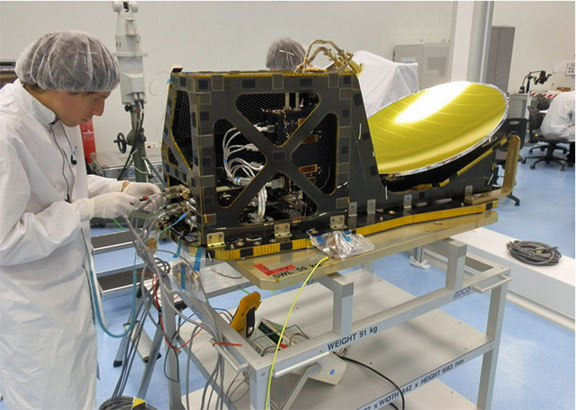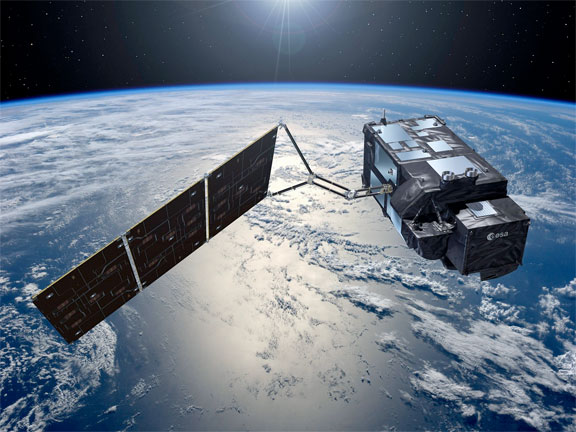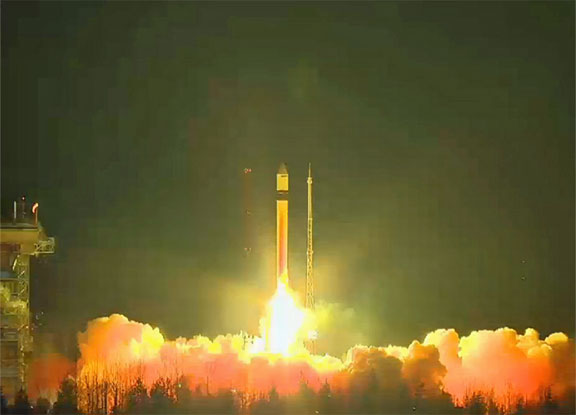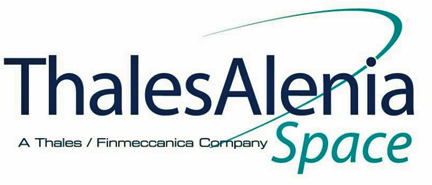Sentinel-3A is the size of a small car with a mass of 1150 kg and is designed for an operating life of seven years.

MWR photo is courtesy of Airbus Defence & Space.
On board Sentinel-3A is an Airbus Defence and Space-built microwave radiometer (MWR) used to remove signal errors caused by water vapor in the atmosphere. This allows accurate tracking over a variety of watery surfaces: open ocean, coastal sea zones, sea ice and inland waters. This 26 kg radiometer measures the thermal radiation emitted by Earth, enabling signal delays caused by moisture in the troposphere to be added to the altimeter pulses, to deliver more accurate data.
Airbus Defence and Space was also responsible for the thermal architecture of the service and payload interface module, which will ensure the correct performance under the extreme temperature variations to which the satellite will be subjected once in orbit, and acryo-cooler system for the Sea and Land Surface Temperature Radiometer (SLSTR) instrument.

Artistic rendition of the Sentinel-3A satellite on orbit. Image is courtesy of ESA, Pierre Carril.
The Sentinel-3 mission is specifically designed to ensure long-term collection and operational delivery of high-quality measurements for ocean, land and atmospheric services. The satellites build upon the heritage and data from the Airbus-built missions of ERS,Envisat and SPOT, and include enhancements to meet the operational revisit requirements and to facilitate new products and an evolution of services. It will extend observations to inland waters and coastal zones.
The primary application of the Sentinel-3 mission is to monitor the world’s oceans, measuring the temperature, color and height of the sea surface and the thickness of sea ice. The data produced will allow scientists to monitor sea-level change and sea-surface temperature, manage water quality, track marine pollution and biological productivity. Sentinel-3 will also provide a land-monitoring service with wildfire detection, land-cover mapping and vegetation health monitoring, providing complementary data to the multispectral optical mission of Sentinel-2.
Eurockot Launch Services GmbH is the Bremen, Germany, based joint venture of Airbus Safran Launchers and Space Center Khrunichev. In addition to the Sentinel-3A launch Eurockot will orbit two more satellites for Europe´s Copernicus program.
After this successful launch of Sentinel-3A, EUMETSAT is preparing to exploit the Copernicus satellite on behalf of the European Union, in cooperation with ESA.

A Rockot launcher drives Sentinel-3A to orbit.
Under the Copernicus agreement it signed with the European Commission on November 7, 2014, EUMETSAT will be the operator of the Sentinel-3A satellite and will deliver its marine mission on behalf of the European Union, in cooperation with ESA. EUMETSAT will take over operations of the Sentinel-3A spacecraft in five months from now, upon completion of the ESA-led, in-orbit commission phase, and will process Sentinel- 3 marine data and products at its Sentinel-3 Marine Centre for real time delivery to the Copernicus Marine Environment Monitoring Service and end-users.
Sentinel-3 is the second of five Copernicus missions to be operated by EUMETSAT, the first being the cooperative Jason-3 marine and climate mission launched on January 17 of this year.



